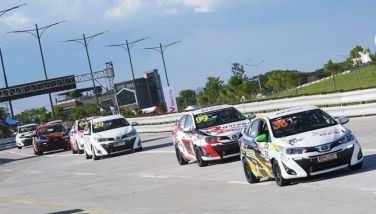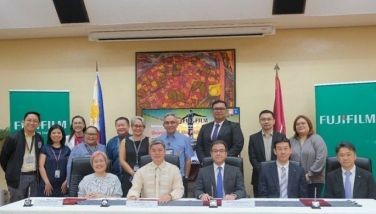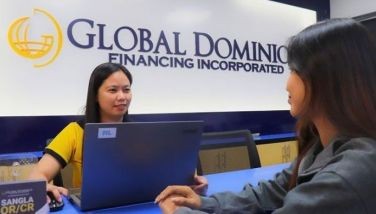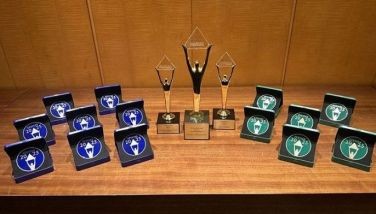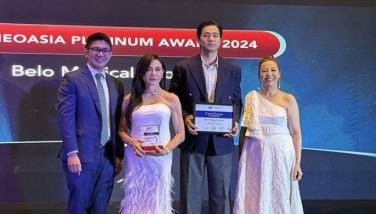Discomfort rooms

One thing I remember about Angara – the father, Edgardo, not the son: there was no running water in the restrooms of the College of Arts and Sciences (CAS) when I started my academic life at the University of the Philippines in Diliman. Until Angara became UP president.
As a freshman, I thought the unhygienic situation must have been the price we had to pay for our dirt-cheap tuition at the time (about P360 per semester, P420 with laboratory) in the state university.
But I also wondered why all the geniuses at UP couldn’t find a way of providing something as basic as running water in the CAS restrooms. I called them discomfort rooms.
And then Edong Angara came along. It was as if someone had waved a wand and said, “Let there be water!” And behold, water came out of the taps, and the toilets could be flushed.
Running water in restrooms is no trivial matter, especially for us women who can’t simply pee by the wall, lamppost or bush. Health experts will tell you that the availability of clean tap water is also no trivial matter for public schools, where handwashing is advocated as a basic practice for good health. Obviously, learning is impaired when a child is sickly.
Sadly for our country, to this day we still have public schools that lack running water in their restrooms. Many students in such schools are also likely to be living in houses without modern toilets, and are among the seven million Filipinos (as of 2020) who still defecate in the open.
These are the students who are most prone to childhood illnesses, who still get sick from preventable diseases such as cholera, and who don’t have enough food and the nutritive elements needed for optimum physical and mental development.
The stunting affects their ability to learn. This impairment can be aggravated by the use of a “mother tongue” that is not used in their household as the medium of instruction (this has happened even in major cities such as Baguio), and sitting in a cramped, mosquito-infested classroom with poor ventilation.
Their problem is worsened if the teacher herself suffers from undernourishment, lacks sufficient training, endures the discomfort of restrooms without running water, and whose fondest dream is to find a job outside the Philippines.
These are among the problems confronting Angara’s son, the incoming secretary of education, Sen. Juan Edgardo “Sonny” Angara.
* * *
President Marcos brushed aside calls for a non-politician to replace Vice President Sara Duterte, and picked Angara, a lawyer, to handle the crisis in Philippine education. Maybe BBM thought the problem in the Department of Education leadership for the past two years was more a matter of competence rather than simply political distractions, so it’s OK to pick another politician.
BBM now acknowledges that there is a state of education emergency nationwide. Perhaps we should be thankful that he didn’t think so at the start of his presidency, or he might have taken on the top DepEd post instead of the agriculture portfolio, and the education crisis could have worsened.
All the crises in the first year of his presidency involved agricultural commodities and food security, when he was the concurrent secretary of agriculture.
“As far as my view of government service is concerned, the most important service that government must provide to its people is a good education,” Marcos said last May.
This was at the National Higher Education Day Summit. DepEd handles basic education, which has even bigger problems that start at the womb when a baby can’t get proper nutrition from an impoverished, malnourished mother.
Sonny Angara has said he would give special attention to early childhood education.
The task is shared by local government units. Some LGUs invest more in public education, but these are typically the wealthier cities and municipalities.
* * *
In my neck of the woods, for example, free public education starts at Kiddie Schools 1 and 2 for residents as young as age three. The local government provides the kiddie classes – mostly a playschool – in an air-conditioned one-story building with small class size (about 20 students per class).
The kids get one free carton of milk for supplemental feeding during the one-hour class, held twice a week for Kiddie 1, and three times a week for Kiddie 2. The school day starts with a flag ceremony and basic physical exercises, followed by activities such as coloring, connect the dots, singing and dancing. Kids get free dental and basic medical checkups. The medium of instruction is Taglish. Parents must shoulder the cost of uniforms and other personal items such as writing implements.
I’m not sure if such early childhood schools are now the rule rather than the exception across the country.
Sonny Angara has said he wants quality education to be accessible to all. His marching order from BBM is to improve the performance of Filipino high school students in the Program for International Student Assessment or PISA.
This is a tall order, considering the state of public education, but modest goals can be set. A slight improvement can be possible by the time the country participates in another PISA, which could be after two years.
Education is supposed to get the largest slice of the budget pie, as stated in the Constitution. In reality, the lion’s share goes to debt payments. But education gets the biggest chunk among the executive sectors.
Obviously, that biggest chunk is still not enough; just ask the teachers. Simply providing piped water for students’ regular handwashing is going to be a challenge for Sonny Angara.
- Latest
- Trending











